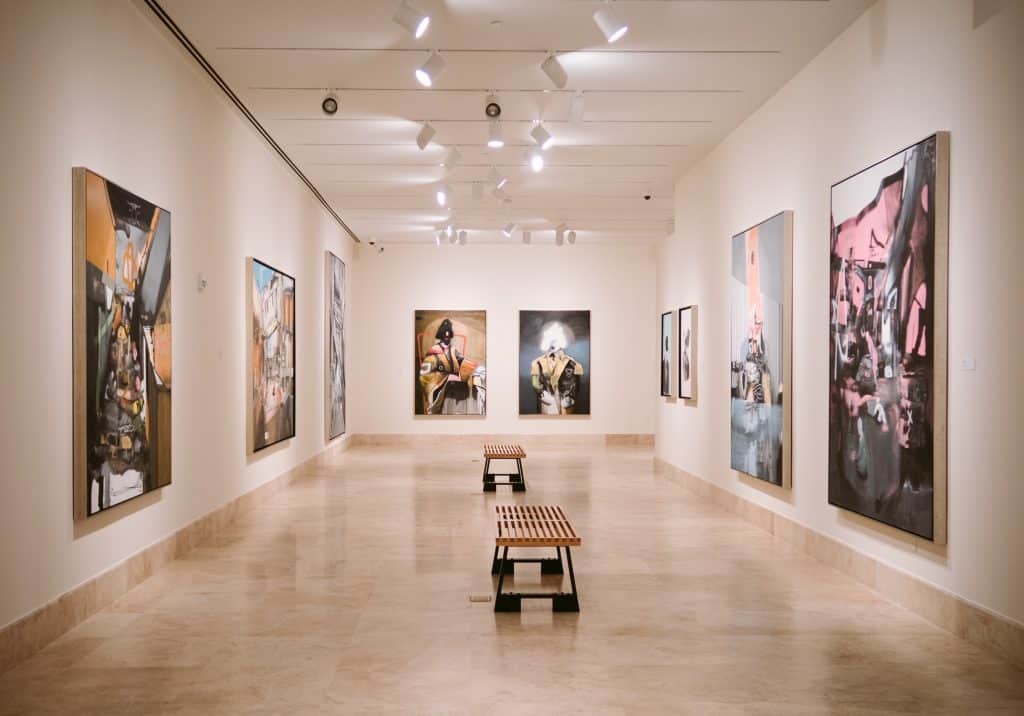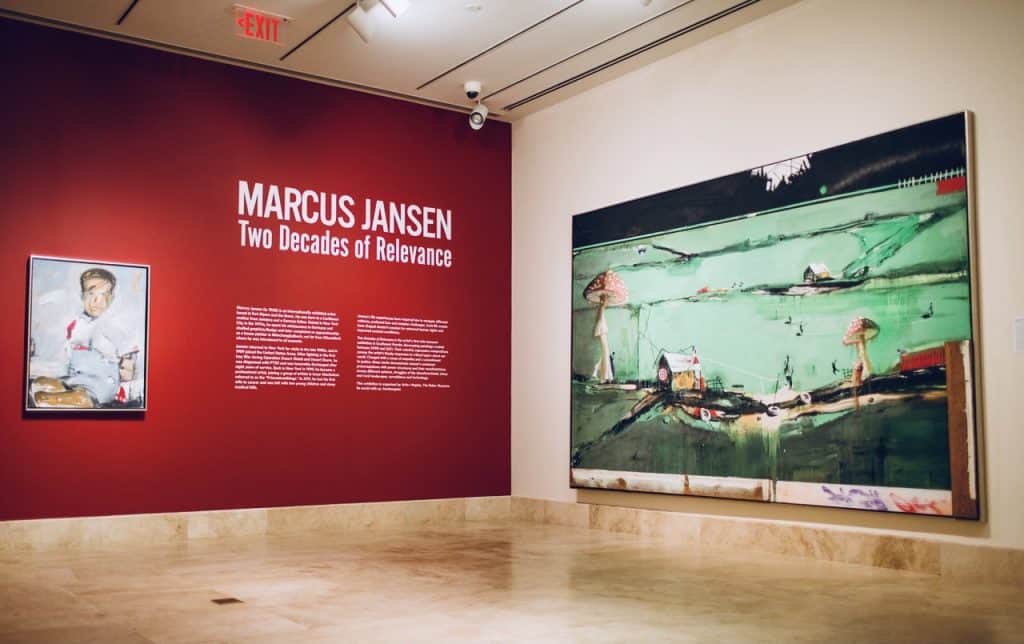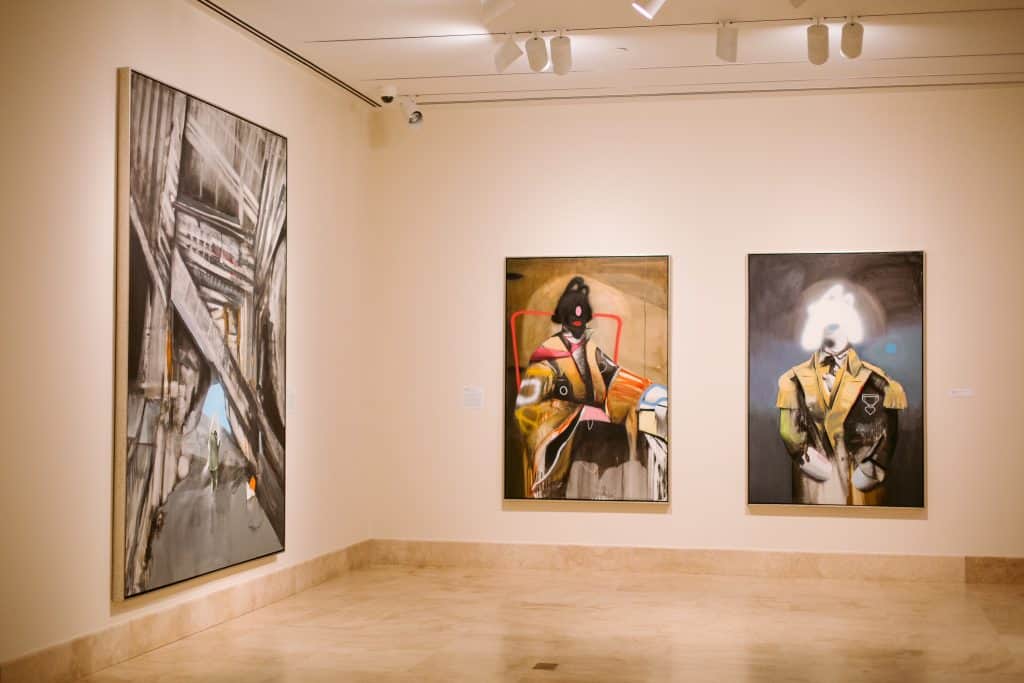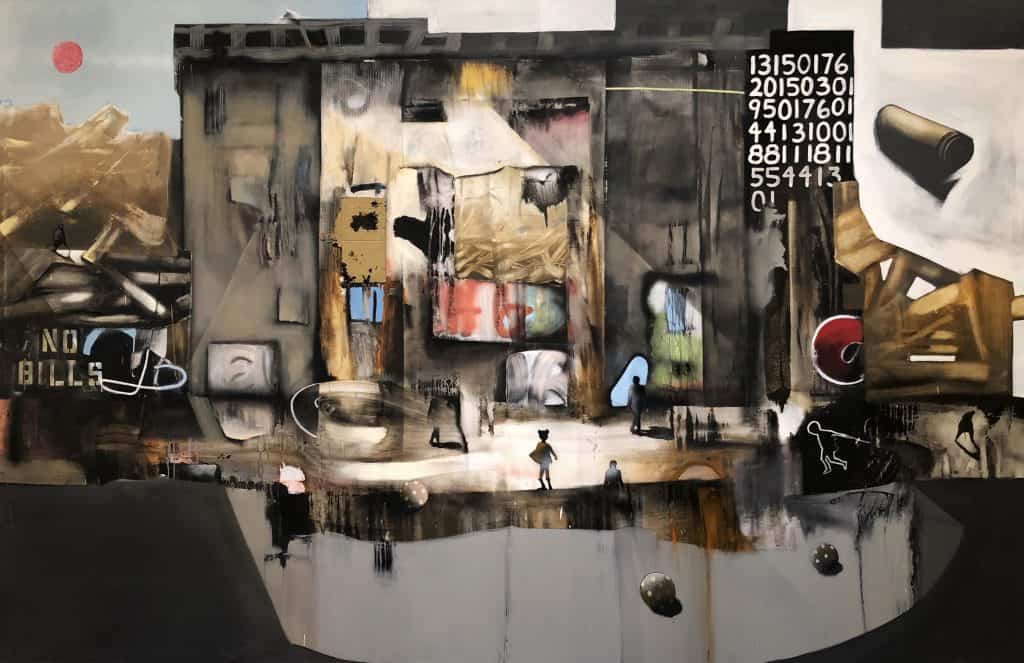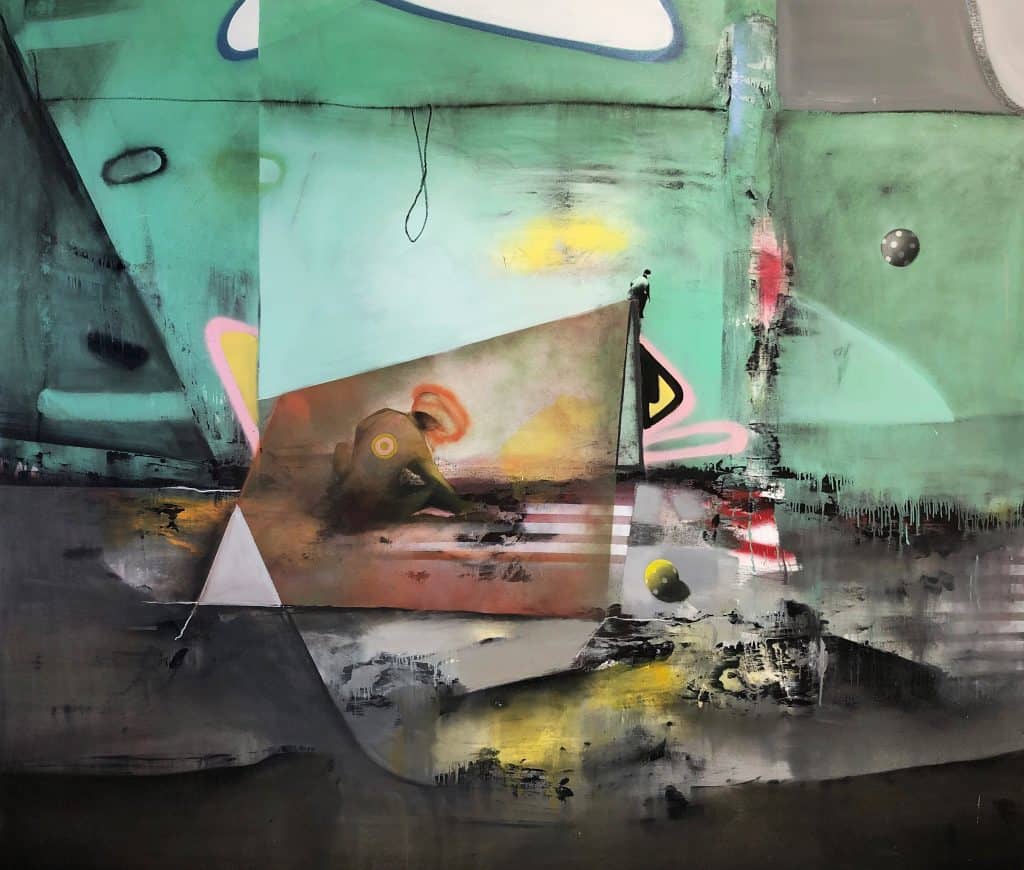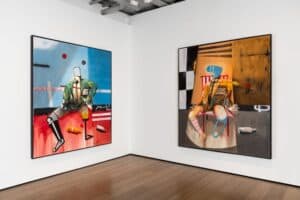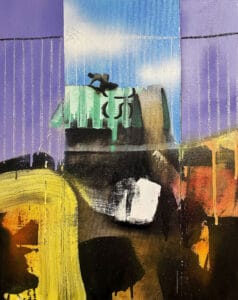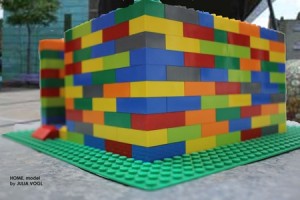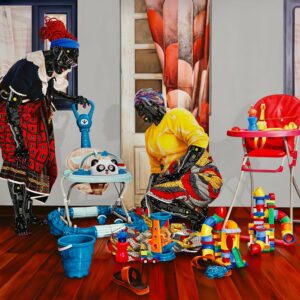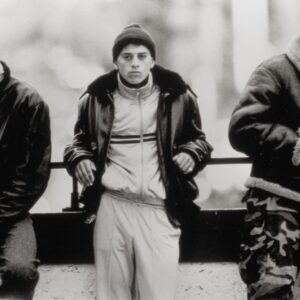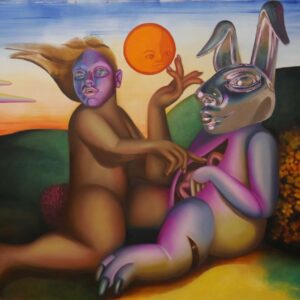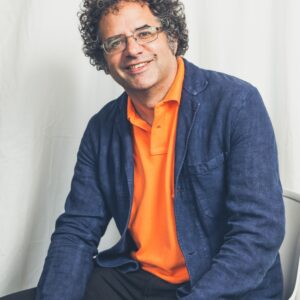“Making art for me it is like eating food or breathing air.” Through vivid and gestural brushwork, contemporary American artist Marcus Jansen creates complex and mesmerizing worlds of memory and life experience. Each elaborate scene, which happens to take the form of a painting, is more halting than the next. Jansen’s works are so arresting, in fact, that it becomes impossible to look away. Such transfixing dystopian universes both respond to, and further difficult conversations surrounding issues of social justice. The artist draws on his past to piece together expressive and urgent works which reflect not only his own traumas but also those of the collective human experience. Various human and animalistic figures exist together on Jansen’s canvas’, collapsing and molding into each other. These beautiful blurs of narrative also seem to parallel the often impenetrable trajectory of human memory and experience. Jansen’s work has been shown around the world at established galleries and museums. An especially complex and fascinating body of Jansen’s work is currently on view at The Baker Museum in Naples. The exhibition, entitled Two Decades of Relevance is on until 25th, July 2021— see video at the bottom of this page for a sneak preview. I was lucky enough to chat with Marcus about this show and about his artistic process as a whole.
Alexandra Zirinis: When did you begin painting? Why?
Marcus Jansen: One of my paintings was chosen to be displayed at the Lever House, in Manhattan, at age 6 while I was taking art classes in Queens. I think that was the first time I realized art could be a tool of communication and something that attracts people’s attention, not just something to hang on the wall at home. I discovered that art was a means of expressing myself through a visual medium and vocabulary.
Did you study fine art in school?
I took fine art classes later, but don’t credit many of my contemporary works to that. My focus in school was graphics and design. I felt early on that the art I found most interesting came from artists that went against academic expectations. I’ve always seen art more as a science, in which knowledge is good, but that the search for new possibilities and positions is where it gets interesting.
How, specifically, does making art help with difficult and traumatic memories in your past?
Making art for me it is like eating food or breathing air. It allows me to slip into a deeply creative frequency where there are no expectations, boundaries or thoughts other than what I’m creating at that particular time and stay there as long as I want. Einstein said, “Creativity is intelligence having fun.” In that realm I can do things that have never been done before. The creative process can channel emotions and translate them into positive creations, regardless of the subject matter while combating fears it puts me in a safe place and in control for the time I am painting.
Are there certain narratives/themes that you are most eager for your audience to recognize in this exhibition? If so, what are they?
Narratives are not as important to me as the feeling or intellectual challenge provoked by my works. I see them more as a puzzle. They are not meant to satisfy or to explain, but to challenge. Each painting should feel somewhat uncomfortable and illustrate something I didn’t already know.
If there is an underlying aim, it is that they all have a general concern for humanity. I hope viewers are able to reflect upon the symbolic representation of various belief systems that are pitted against human concerns in my work. Mostly, it is to be seen as work painted by someone with a different point of view or lens.
How does this body of work set itself apart from past exhibitions?
This exhibition is focused on specific pieces from the last 20 years and their relationship to what’s happening today. Many have not been shown in museums before and in the case of some of the older ones, in any exhibition at all. My last show in Paris with Almine Rech was comprised of all newly painted works.
How did the global pandemic affect you personally, specifically in terms of your creative process?
It was a great opportunity to reflect on my priorities that seems to come with any life-threatening crisis. To me, it underlined the urgency of how important it is to have concern for others. Professionally, my work received more attention than in the last 30 years. I assume is that people’s consciousness has been raised and they now see parallels in my work that may have seemed less urgent before. I was more concerned about others during this terrible year, and my art making shifted to factor in current events as themes.
Can you describe your process of making works such as the ones in this exhibition (time in the studio, materials, inspiration etc.)
I usually start with a general theme for an exhibition, but not always. In this exhibit, the paintings, created between 2008 and 2021, were chosen by the museum curators. The theme will usually dictate the initial direction of the next step, and from there, the accumulation of materials images, research, influences and decisions lead me to a familiar or even unfamiliar place. The works always wind up being close to me, yet just out of reach. My inspirations are usually from contemporary or historical events that have a direct economic, psychological or military impact on human rights.
From what I can understand, you appear to use your own memories and past trauma to propel your creative process, (please correct me if I am wrong) How do you do this without getting stuck in thinking about/dealing with such traumatic events?
I allow current events to influence me because that is contemporary life. They usually trigger a memory or concern from my past that I react to visually. The theme or topic that inspires me may become a trigger, but not necessarily; it may serve more as a catalyst to dig deeper into a subject and find ways to translate those feelings into a visual vocabulary. This charges the paintings with emotion and comments on the area of general concern. The work often becomes social commentary rather than just interpreting a story about myself. This serves a broader purpose and allows me to link my personal experiences with other people’s and the work itself.
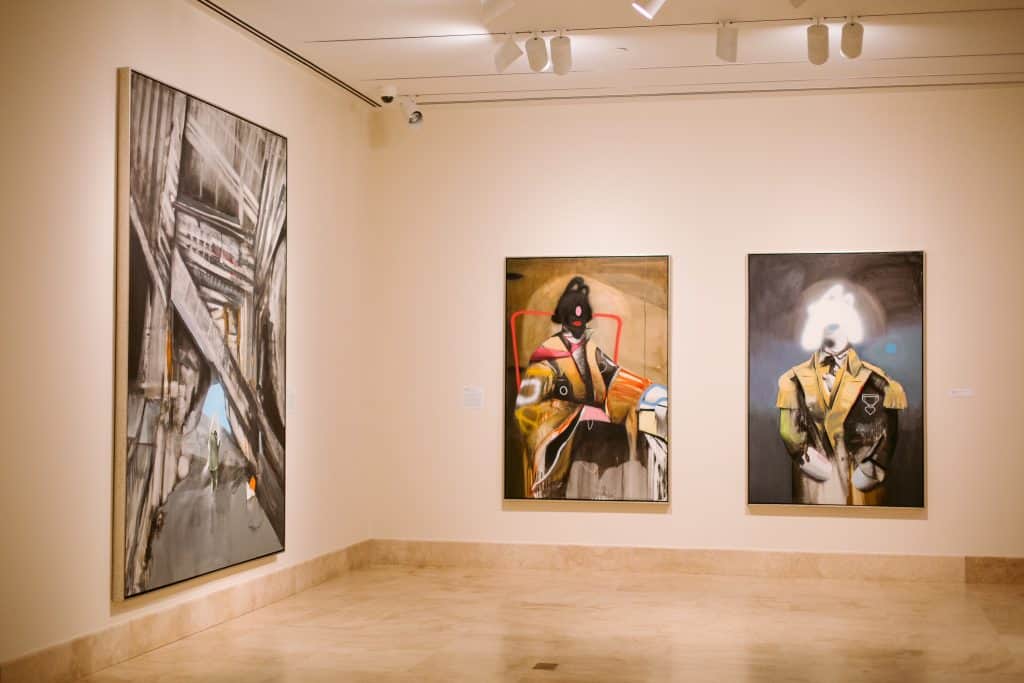
Exhibition preview video :
